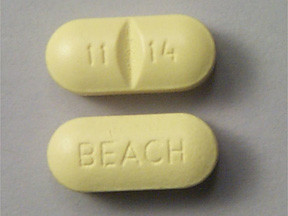METHENAMINE MANDELATE/SODIUM ACID PHOSPHATE - ORAL
PHONETIC PRONUNCIATION: (meth-EN-uh-meen MAN-duh-late/SO-dee-um FOSS-fate)
COMMON BRAND NAME(S): Uroqid-Acid No.2
GENERIC NAME(S): methenamine mandelate/sodium phosphate,monobasic
Uses
USES: This medication is used to prevent or control returning urinary tract infections caused by certain bacteria. It is not used to treat an active infection. Other antibiotics must be used first to treat and cure the infection. Methenamine is an antibiotic that stops the growth of bacteria in urine. Sodium acid phosphate helps to make the urine acidic. When the urine is acidic, methenamine turns into formaldehyde to kill the bacteria. This antibiotic is effective only against bacterial infections in the urinary tract. It will not work for other types of bacterial infections (such as in the blood) or for viral infections (such as the common cold or flu). Unnecessary use or misuse of any antibiotic can lead to its decreased effectiveness.
How to use METHENAMINE MANDELATE/SODIUM ACID PHOSPHATE - ORAL
HOW TO USE: Take this medication by mouth as directed by your doctor, usually 4 times daily at the beginning of treatment, then 2 to 4 times daily. Take with a full glass (8 ounces or 240 milliliters) of water. Dosage is based on your medical condition and response to treatment. Methenamine works better if your urine is more acidic. Your doctor may test the acidity of your urine (urine pH). If necessary, your doctor may recommend ways to increase urine acidity (such as by taking vitamin C/drinking cranberry juice, limiting foods that decrease acidity/increase alkalinity such as milk products/most fruits, adjusting alkalinizing medications). See also Drug Interactions section. Follow your doctor's instructions. For the best effect, take this antibiotic at evenly spaced times. To help you remember, take this medication at the same time(s) every day. Continue to take this medication for the full time prescribed, even if you feel well. Skipping doses or stopping the medication too early may allow bacteria to continue to grow, which may result in a return of the infection and make the bacteria more difficult to treat (resistant). Do not take more of this drug than directed because it may increase your chance of side effects. Tell your doctor if symptoms of a urinary tract infection return (such as burning/painful/frequent urination).
Side Effects
Precautions
Interactions
Overdose
Images

- color
- yellow
- shape
- oblong
- imprint
- BEACH, 1114
Reviews
Faq for METHENAMINE MANDELATE/SODIUM ACID PHOSPHATE - ORAL
Methenamine Mandelate/Sodium Acid Phosphate is a medication used to help prevent certain types of urinary tract infections.
Methenamine Mandelate/Sodium Acid Phosphate works by creating an acidic environment in the urine, which helps to kill bacteria that may cause urinary tract infections.
Common side effects of Methenamine Mandelate/Sodium Acid Phosphate may include upset stomach, nausea, vomiting, and diarrhea. It may also cause urine discoloration.
You should take Methenamine Mandelate/Sodium Acid Phosphate exactly as prescribed by your doctor. It is usually taken with food or after a meal to help reduce stomach upset. Follow the instructions on the medication label.
It is important to consult your doctor before taking Methenamine Mandelate/Sodium Acid Phosphate if you are pregnant or breastfeeding. They can determine if the benefits outweigh the potential risks.
Methenamine Mandelate/Sodium Acid Phosphate may interact with certain medications, including antacids, sulfa drugs, and certain antibiotics. It is important to inform your doctor about all the medications you are taking to avoid any potential interactions.
Methenamine Mandelate/Sodium Acid Phosphate may start working within a few days, but it is important to continue taking the medication for the full prescribed duration to effectively prevent urinary tract infections.
Methenamine Mandelate/Sodium Acid Phosphate can be used in children, but the dosage may vary depending on their age. It is important to follow the doctor's instructions and consult a pediatrician if necessary.
If you miss a dose, take it as soon as you remember. However, if it is close to the time for your next dose, skip the missed dose and continue with your regular dosing schedule. Do not double the dose to make up for a missed one.
Disclaimer
IMPORTANT: HOW TO USE THIS INFORMATION: This is a summary and does NOT have all possible information about this product. This information does not assure that this product is safe, effective, or appropriate for you. This information is not individual medical advice and does not substitute for the advice of your health care professional. Always ask your health care professional for complete information about this product and your specific health needs.
No Reviews Yet